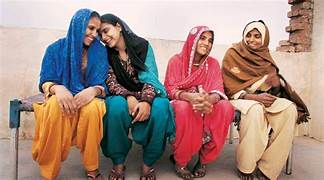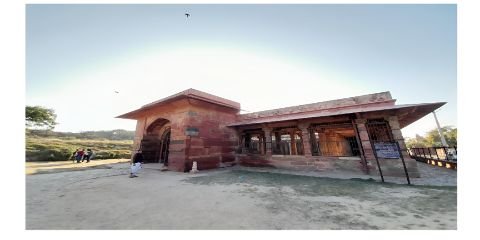History of Mewat is an ancient and important region, which holds an important place in various chapters of Indian history. Its mewat history is extremely interesting and deep, in which rich cultural and historical heritage is hidden.
IntroductionHistory of Mewat studies many important events and their consequences from ancient times to modern times. This region is still famous for its antiquity, cultural heritage, and rich history. The history of India can never be complete without the History of Mewat. Mewat region is situated to the south of Delhi and is also in close touch with Delhi. Only Gurgaon city is between Mewat and Delhi.

History of Mewat Ancient
The history of Mewat is very ancient and it is linked to the later period of the Vedas. There is mention of Mewat in the Vedas, which is proof of its very ancient and rich culture.Even in the Mahabharata period, there is a mention of Mewat in which there is a Shiva temple at Firozpur Jhirka and a deep well next to it. It is said about this that this Pandava son, i.e. those five Pandavas, drank water from this and also spent some days in exile here.
important events
Many important events have taken place in History of Mewat, such as it played an important role in the Mahabharata period. Apart from this, this area was also considered important during the times of the rulers of the Gupta and Maurya empires. History of Mewat From the Vedic period to the modern times, Mewat was known for its rugged forests. This was the reason why Pandavas chose the area of Mewat to escape from the Kauravas.
society and culture society and culture
The society and culture of Mewat has been an important part of Indian cultural heritage. The diversity and cultural traditions of the people here have given it a unique place.
The History of Mewat and the culture of Mewat region, both are considered different in the whole of India. Like the tradition here and the dialect here as well as the art field here are different from all in India.
History of Mewat language

First of all we will talk about the language of Mewat region, the language here is like chewing iron feet for the whole of India. Mewati language is a mixture of Arabic, Urdu, English, Hindi, Sanskrit, Prakrit, Pali, Rajasthani, and Haryanvi. And most of all a mixture of Pali language is found in it. Pali is the language that was spoken in ancient India, in which the rise and spread of Jainism and Buddhism began. Today this language is mostly spoken in Mewat region only. There is also a mixture of modern languages in it due to which this language becomes a steep language.
Words of Mewati language
We are giving below some important words of Mewati language by which you can understand how dangerous this language is, although the people here speak very simply and with great love.
Hindi: where are you going
Mewati: Come where can I take you?
Hindi: what are you doing
Mewati: Where are you doing?
Hindi: where did you go
Mewati: Where have you gone?
Hindi: What are you doing now
Mewati: Where do you go?
Hindi: Have you done that work?
Mewati: Go and tell me where you are.
Hindi: Are you going to Delhi city
Mewati: Go to Delhi and cry!
Hindi: Have you called Ramesh?
Mewati: Tosu nu kahi wa Ramesh sa lu phone kar leo karo hai hai?
There are some words like this, which are not being written by us, and are not being read by you, it is a very distant thing to understand. This word is quite common in Mewati language and in Mewat Ka Itihas. But on the other hand, it is absolutely dangerous because Tu Taadak is used more in it.
Mewat during Mughal and British period
Mewat Ka Itihas has also been important during the reign of Mughal and British rulers. (Mewat during Mughal and British period) During this period, many important chapters of politics, social change, and cultural development were written here. Before the establishment of the Mughal Empire, Mewat used to be an independent kingdom. The last and Mahavir king here was Hassan’s Mewati. Hassan Ka Mewati is known to be the most powerful of Mewat and to grow the empire of mewat history. Raja Hasan of Mewati did not kneel before the Mangal descendant Babar even though he had to face defeat at the hands of Babar in the battle of Panipat.
There is a different story about the first battle of Panipat, which we will write in a separate article, just understand that this war took place between patriotism and anti-nationalism. The History of Mewat was written extensively by Raja Hasan Khan and scholars also included it in the history of Mewat around the world. Raja Hasan of Mewati showed his patriotism in such a way that he beheaded 12,000 of his horse riders, but did not like to bow before Babar.
As far as the independence campaign of 1857 of the British Empire is concerned, the Mewati army had participated most enthusiastically in it. More than 10,000 Meos were martyred in the revolution of 1857, which was the highest number in the entire country. The history of Mewat is a witness to this – that when the independence rebellion was suppressed by the British, around 10,000 Mewati people were arrested and hanged from trees.
One thing that makes me sad in modern history is that the Meos who fought such a big battle for freedum Kom was never given his due, so much so that his role in independence was completely lost sight of by historians. Worldwide History works with integrity to find the right information and deliver it to you.
Politics and social change Politics and social change
During the reign of the Mughal Empire, Mewat was made the beauty of governance and the social and economic development of the people here took place. After the arrival of the British rulers, political crises were faced here.
It is written in the History of Mewat that even though King Hasan Khan had to face defeat in the war with Babar, the Mughals did not end the dominance of Mewat at all. Seeing the bravery, cleverness and honesty of Mev Kom, Babar did many works of development in the Mewat region, especially he recruited the warriors of Mev Kom for special tasks in his army, and also elevated them to high-level positions.
On the other hand, during the British period, the heritage of Mewat was so badly demolished that today Mewat is considered to be the most backward area in the whole of India. The politics of Mewat and the culture of Mewat would have been left almost untouched by the British. Otherwise 99% of it has been eliminated. And its example is that today neither Mewat has any culture nor does it have any importance in politics.
Religion and cultural influence
Religion and cultural influence have an important place in the history of Mewat. There was a confluence of different religious sects here and this provided diversity to the cultural heritage of this region.
From the arrival of the Arabs to India till the History of Mewat modern India, the history of Mewat is a witness to the fact that there have never been any communal riots inside the Mewat region. In Delhi Sultanate itself, Sonpal of Mewat region, who was the king of Kotla, became a Muslim. Since then there has never been any Hindi-Muslim conflict in the History of Mewat.
There were communal riots in the Mughal Empire too but Mewat remained untouched in these too, after this, even under the policy of ‘divide and rule’ of the British Empire, there were no communal riots of Hindus and Muslims in Mewat.
Yes, some time ago, there was a small communal riot in Mewat – not between the people living inside Mewat, but between some outside goons of BJP and RSS and the people of Mewat, which historians call Mewat’s biggest communal riot. Do not believe in communal riots between people.
Freedom Struggle History of Mewat 1857
In the history of Mewat, Mewat has also played an important role in the Indian Freedom Struggle. The warriors here fought against the British rule and sacrificed their lives for the Freedom Struggle. In the book ‘Mewati Rebellion of 1857’, the freedom struggle of 1857 has been explained in complete detail about Jang-e-Azadi.
In this book, it is told about the 1857 campaign for independence of Mewat – that from Mathura to Rohtak, the dead bodies of Meo Muslims were killed and hanged by the British. According to this book, 22 to 25,000 dead bodies are mentioned. It has been said in this book that these dead bodies were never counted nor did any historian find it appropriate to write about these martyrs.
History of Mewat Role of warriors
The warriors of Mewat contributed to the freedom struggle and faced against the British rule. His bravery and courage played an important role in taking the country forward towards independence. Regarding the brave and great warriors of Mewat, Britain’s Brigadier General Sawant has written that the fear of the horsemen of Mewat kept troubling him all the time. And we had to be more vigilant than all the warriors of India. Brigadier General Sawant was one who served for the British Empire in India during the British Empire.
modern mewat
modern mewat After independence, Mewat took its steps towards modernity. Here many aspects of politics, economic development, and community upliftment were improved. Which is also called modern mewat today.
Politics and economic development
Politics and economic development have an important place in the modern history of Mewat. Here many aspects of economic development were improved under various government schemes.
Community upliftment and challenges
Community upliftment and challenges of Mewat can be discussed. The people here have to face new challenges to move forward in the direction of modern development.
future of History of Mewat
The future of Mewat will play an important role in Indian society and politics. There are new possibilities in the areas of development here, which will help in taking this sector forward.
Opportunities in areas of development
In terms of the future of Mewat, there are many possibilities in the areas of development, such as education, health, and economic development. The people here should be encouraged to utilize these possibilities properly. Even today 70% of the population in Mewat is illiterate. This is not surprising, it is true. What is even more shocking is that Mewat region is only 60 kilometers away from the capital of India, which is called the Mahaguru of the world. Yet this region is considered to be the most isolated region of India.
The heroes who sacrificed their lives for India’s freedom and their patriotism. Today, while living in their graves, what would they be thinking as to why this area of ours has gone so backward? If seen from the History of Mewat then this. Yes, there is a great shortage of two things, one is education and the other is health. What should I talk about government schools and hospitals? There would hardly be a single hospital or school here which would provide proper treatment or good education. I don’t need to write the rest.
The History of Mewat and the prospects for development in the Mewat region seem to be negligible. If we talk about development in Mewat region, education is very important here. The government will have to implement it with force here and will have to make full efforts and provide proper resources for this.
direction of change in societyIn the future of Mewat,
there can be important changes in the direction of change in the society. The people here should play an active role in taking their society in the direction of modernity.
If the people of Mewat do not change their society as soon as possible, then the History of Mewat will bear witness to this. That in the modern period, when the world was moving towards planets like Moon, Mars, Saturn, and Sun, there was a society in this world which was going back towards the primitive man period. And the main reason for this would be only one – that society did not give importance to education.
Conclusion History of Mewat
The history of Mewat is a deep and interesting region, which has a rich cultural and historical heritage. Studying it gives us a deeper understanding of our society and history.

History of Mewat Frequently Asked Questions (FAQs)
1. In which state is Mewat located?
Mewat is located in the state of Haryana.
2. Why is the history of Mewat important?
The history of Mewat helps us to understand the important stream of development of Indian society and culture.
3. What is the importance of Mughal and British periods in the history of Mewat?
The Mughal and British periods have an important place in the history of Mewat, because during this period various social and economic changes took place here.
4. Who were involved in the freedom struggle of Mewat?
Khan Abdul Ghaffar Khan, Maulana Abdul Rahim Khan, and Syed Abdul Ghaffar Khan were among the many great warriors who participated in the freedom struggle of Mewat.
5. What are the future prospects of Mewat?
There are many possibilities in the future development areas of Mewat, which will help in taking the region forward.
Thus, Mewat Ka Itihas urges us towards its rich and deep history, which helps in understanding our society.




Right To Mewat